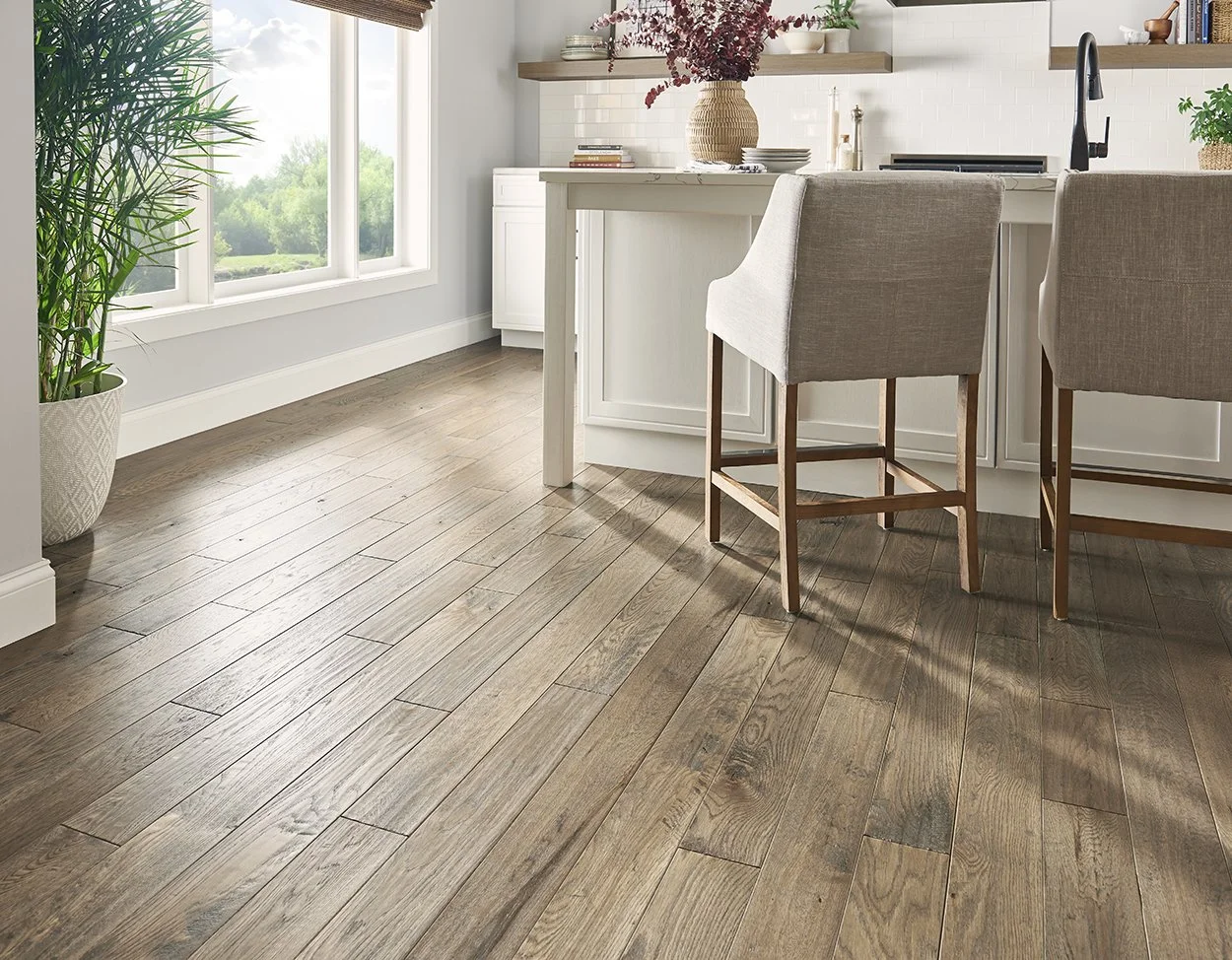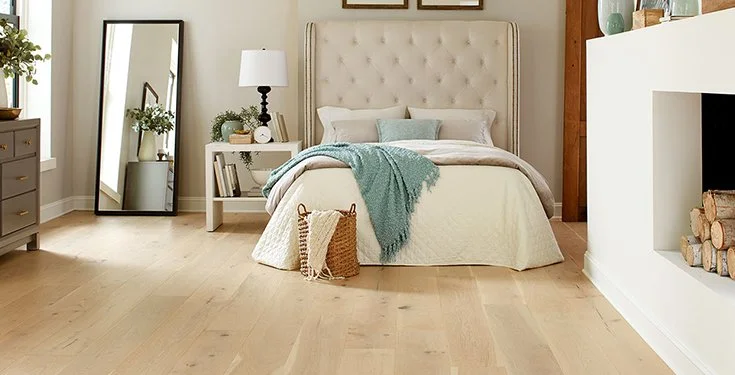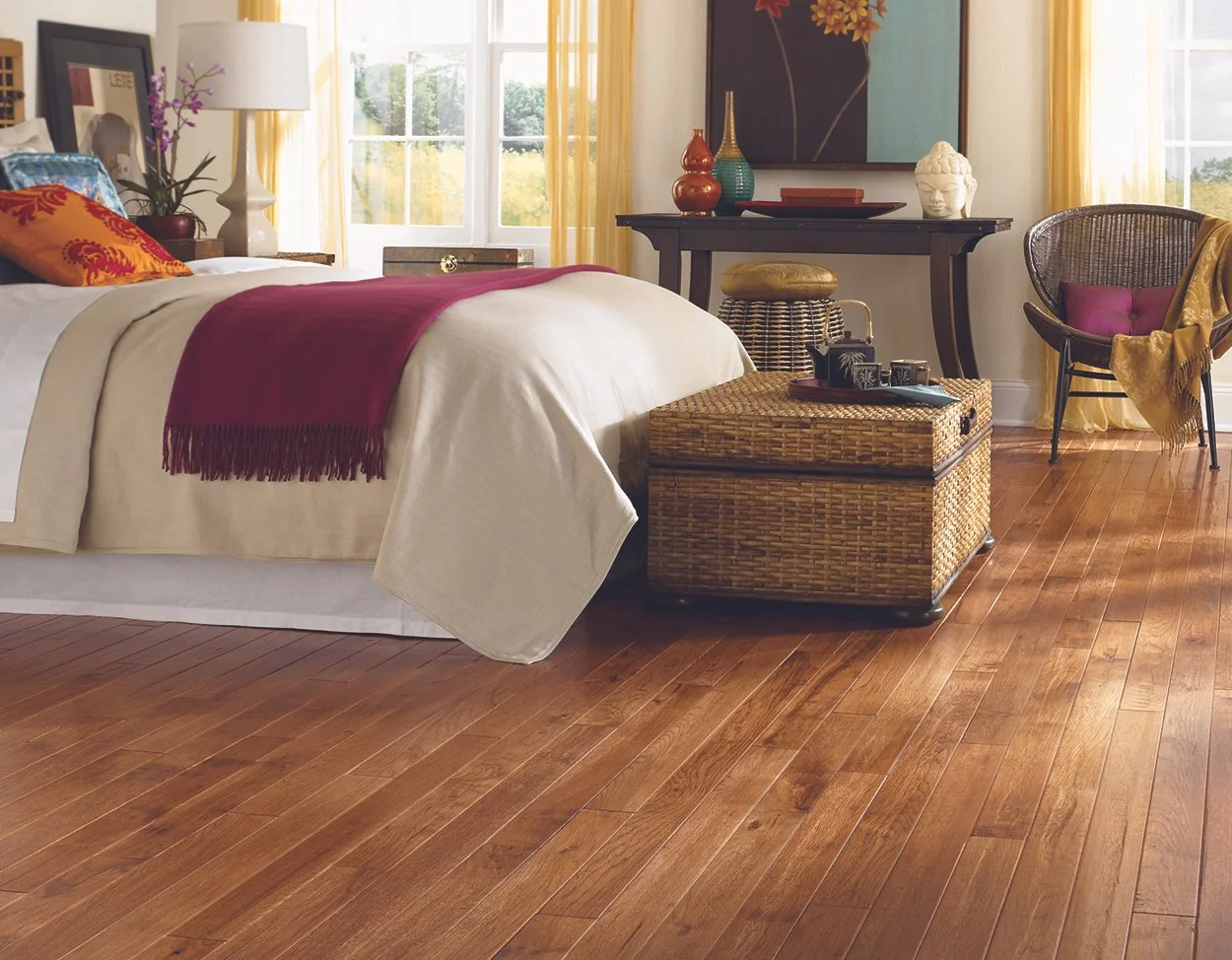🌳 You're literally buying TREES! Here's what to expect (and love) about natural hardwood floors
Considering natural hardwood floors? Each plank tells a unique story with authentic character that can't be replicated. Learn what to expect from real wood—seasonal movement, organic variations and its maintenance—plus how to choose the right wood for your home's style and lifestyle.
Natural Wood Flooring 101: What to Love and What to Expect

Love real hardwood floors? When you choose natural hardwood, you're not just selecting a floor covering—you're bringing a bit of the forest into your home. Each plank tells the unique story of a tree that grew for decades, living through countless seasons and developing its own character along the way.

Therein lies the one-of-a-kind lure of natural wood flooring: Its beauty can’t be replicated and it’s meant to last. When it comes to flooring, there's no substitute for understanding exactly what you're bringing home. So here’s natural hardwood 101: from embracing its imperfect perfection to learning about hardness and selecting the right grain patterns to complement your home's architectural style.
Hardwood is Perfectly Imperfect

Just like no two trees are identical, no two hardwood planks will be exactly the same.
This natural variation is one of hardwood's greatest assets, though it sometimes catches new owners off guard. You might notice differences in grain patterns, color tones or natural markings between planks—even within the same shipment. Why? Because that red oak in your living room might come from a tree that grew in the sun-splashed meadows of California, while the planks in your hallway originated from a cool-weather Canadian forest where growing conditions were totally different.

At Heritage Floors, we work with select hardwood manufacturers who source from multiple locations. This means your flooring order might include planks from different mills—and that's perfectly normal. It's not a flaw; it's proof of authenticity and looks beautiful.

Tip: Variations in natural hardwood can highlight a room's warm, organic character. Greater variation is often sought for spaces where you want to accentuate a historical or well-aged look. Looking for lots of rustic appeal? Consider hand-sculpted hardwood for a one-of-a-kind textured surface.
What to Expect
- Seasonal Movement: Expect super slender gaps between planks in winter, and tighter seams in summer due to humidity changes.
- Character Development: Floors will develop a patina over time—adding depth and charm.
- Maintenance: Natural wood needs more care than engineered alternatives — regular cleaning, prompt spill management, and the possibility of refinishing years down the road to restore its original beauty.

The small knots, subtle color shifts and swirling grain patterns aren't defects—they're signatures from nature that tell your floor's story.
Ready for the Real Thing?

Natural hardwood isn’t for everyone. Ask yourself:
- Do you appreciate one-of-a-kind natural materials?
- Are you willing to engage in proper maintenance?
- Can you embrace signs of life and wear over time?
- Do you want something completely unique?
If you answered yes, natural hardwood will reward you with warmth, beauty and timeless authenticity.
Hardwood Selection 101: Density & Style

Selecting Hardness
Wood hardness impacts longevity. The Janka scale (developed in 1906) rates wood density, still the global standard today.
- Soft woods (pine, fir – under 600): Budget-friendly, best for low-traffic rooms.
- Medium woods (cherry, walnut – 600–1,200): Rich grain, good for most living spaces.
- Hard woods (oak, maple, hickory – 1,200+): Ideal for high-traffic areas, pets, kids.
Choose Your Visual Style – Grain & Plank

Tip: Decide if you want floors that blend in or stand out.
- Straight, subtle grains (maple, birch): Great for modern, minimalist homes.
- Bold, rustic grains (oak, hickory, ash): Add drama to traditional or Craftsman-style spaces.
- Refined, warm grains (cherry, walnut): Sophisticated and elegant for transitional interiors.
Plank Width:
- Narrow (2–3"): Classic, ideal for small rooms or historic homes.
- Medium (4–5"): Versatile and balanced.
- Wide (6”+): Expansive, modern and showcases grain—ideal for large rooms.
When Natural Wood Isn’t the Right Fit
If solid hardwood isn't ideal for your lifestyle, explore alternatives:
- Engineered hardwood: Same surface beauty, greater moisture resistance and stability.
- Luxury vinyl, laminate, ceramic tile: Durable, stylish and often more budget-friendly.
- Carpet: Offers comfort and warmth in bedrooms and family spaces.
The Bottom Line
Natural hardwood flooring means choosing authenticity over uniformity, character over perfection and timelessness over trend. Yes, it takes care—but it gives back beauty, warmth and a connection to something real.
Ready to explore your flooring options? Visit Heritage Floors in Lancaster County, Pennsylvania. With over 30 years in flooring, we offer expert advice, free estimates, and help you find the perfect floor for your lifestyle, design and budget.
